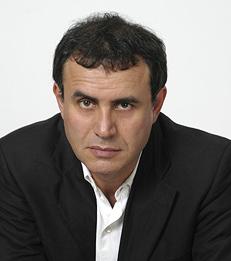Opinion
We're Heading for a Stagflationary Crisis Unlike Anything We've Ever Seen.
—

By Nouriel Roubini
Inflation is back, and it is rising sharply, especially over the past year, owing to a mix of both demand and supply factors. This rise in inflation may not be a short-term phenomenon: the Great Moderation of the past three decades may be over, and we may be entering a new era of Great Stagflationary Instability.
Unless you are middle-aged and gray-haired, you probably hadn’t heard about the term stagflation until very recently. You may have barely heard about inflation. For a long time, until 2021, inflation—the increase in prices year to year—was below the advanced economies’ central banks’ target of 2%. Usually inflation is associated with high economic growth. When aggregate demand for goods, services, and labor is strong, coupled with positive animal spirits, optimism about the future, and possibly loose monetary and fiscal policies, you get stronger than potential economic growth and higher than target inflation. Firms are able to set higher prices because demand outstrips supply, and workers receive higher wages given a low unemployment rate. In recessions, on the other hand, you have low aggregate demand below the potential supply of goods, which leads to a slack in labor and goods markets, with ensuing low inflation or even deflation: prices go down as consumers’ spending declines. Stagflation is a term that refers to high inflation that happens at the same time as stagnation of growth or outright recession.
But sometimes the shocks hitting the economy, rather than coming from changing demand, can come from the supply side: an oil-price shock, say, or a rise in food or other commodity prices. When that happens, energy and production costs rise, contributing to lower growth in countries that import that fuel or food. As a result, you can get a slowdown of growth, or even a recession, while inflation remains high. If the response to this negative supply shock is loose monetary and fiscal policy—banks setting low interest rates to encourage borrowing—to prevent the slowdown in growth, you feed the inflation flames by stimulating rather than cooling demand for goods and labor. Then you end up with persistent stag-flation: a recession with high inflation.
Read the full TIME Magazine article.
___
Nouriel Roubini is a Professor Emeritus of Economics and International Business and the Robert Stansky Research Faculty Fellow.
Unless you are middle-aged and gray-haired, you probably hadn’t heard about the term stagflation until very recently. You may have barely heard about inflation. For a long time, until 2021, inflation—the increase in prices year to year—was below the advanced economies’ central banks’ target of 2%. Usually inflation is associated with high economic growth. When aggregate demand for goods, services, and labor is strong, coupled with positive animal spirits, optimism about the future, and possibly loose monetary and fiscal policies, you get stronger than potential economic growth and higher than target inflation. Firms are able to set higher prices because demand outstrips supply, and workers receive higher wages given a low unemployment rate. In recessions, on the other hand, you have low aggregate demand below the potential supply of goods, which leads to a slack in labor and goods markets, with ensuing low inflation or even deflation: prices go down as consumers’ spending declines. Stagflation is a term that refers to high inflation that happens at the same time as stagnation of growth or outright recession.
But sometimes the shocks hitting the economy, rather than coming from changing demand, can come from the supply side: an oil-price shock, say, or a rise in food or other commodity prices. When that happens, energy and production costs rise, contributing to lower growth in countries that import that fuel or food. As a result, you can get a slowdown of growth, or even a recession, while inflation remains high. If the response to this negative supply shock is loose monetary and fiscal policy—banks setting low interest rates to encourage borrowing—to prevent the slowdown in growth, you feed the inflation flames by stimulating rather than cooling demand for goods and labor. Then you end up with persistent stag-flation: a recession with high inflation.
Read the full TIME Magazine article.
___
Nouriel Roubini is a Professor Emeritus of Economics and International Business and the Robert Stansky Research Faculty Fellow.
